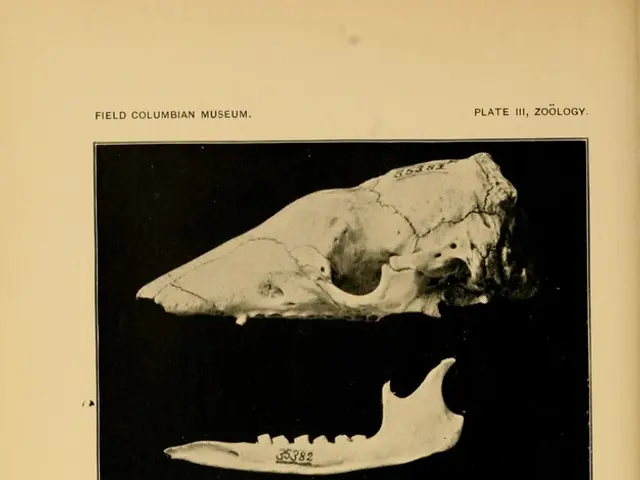Research Findings: Potential Role of Infant Visual Impairment in Structuring Brain Visual Pathways
In a groundbreaking study, researchers from MIT have discovered that low-quality visual input during early life plays a crucial role in shaping the specialization of the magnocellular and parvocellular pathways in the human visual system.
**Early Visual Experience**
Newborns typically have underdeveloped retinal cone cells, resulting in poor visual acuity and limited color vision. This means that infants initially receive blurry, color-reduced visual input, setting the stage for the development of their visual system.
**Pathway Specialization**
The magnocellular pathway is responsible for processing low spatial frequency information, motion, and temporal changes, while the parvocellular pathway specializes in high spatial frequency and color information.
**Development of Pathways**
Computational modeling and neuroscientific studies suggest that early exposure to low-quality images leads brain cells—particularly those in the magnocellular system—to specialize in processing global, coarse, and achromatic information. As visual input improves with maturation, the parvocellular system becomes more finely tuned to detailed, color-rich information.
**Training Models**
The researchers trained computational models of vision on a developmental trajectory that mimics infant experience (starting with low-quality images and gradually increasing in clarity and color). The resulting artificial neurons showed characteristics similar to the magnocellular and parvocellular pathways. Models trained only on high-quality images did not develop this clear distinction.
**Importance of Gradual Development**
Gradual progression from poor to rich visual input appears to be important. Immediate access to high-quality, color-rich vision can result in an over-reliance on color cues, as seen in some children who gain sight later in life after congenital blindness surgery. These individuals may lack the robustness seen in typically developing children, who develop resilience to color removal and a more balanced use of visual cues.
**Summary Table**
| Pathway | Early Development Input | Specializes In | Developmental Result | |-------------------|-----------------------------|-------------------------------|---------------------------------------| | Magnocellular | Blurry, low-resolution, achromatic | Low spatial frequency, global info, motion | Preferentially develops during low-quality input | | Parvocellular | Clear, high-resolution, color | High spatial frequency, color | Refines as visual input improves |
**Conclusion**
Low-quality visual input during early development helps the brain organize its visual pathways by initially favoring the development of the magnocellular system for processing coarse, blurry, and achromatic information. The parvocellular system, responsible for fine detail and color, matures as visual input becomes clearer and more colorful. This sequential and progressive development is critical for robust, well-balanced visual processing.
The MIT team proposes that early life's blurry, color-limited vision may lead to brain cells specializing in low spatial frequencies and low color tuning. Models trained on biomimetic video input showed that units most tuned to high temporal frequencies were indeed the ones that also exhibited magnocellular-like properties in the spatial domain. Models trained on the biomimetic data developed a distinct subset of processing units that are jointly responsive to low-color and low-spatial-frequency inputs, similar to the magnocellular pathway. This study provides valuable insights into the development of the human visual system and offers a mechanistic account of the emergence of the parvo/magno distinction in the visual pathway of the mammalian brain.
- This groundbreaking study in the realm of journal articles related to health and biology sheds light on the role of early visual experience in shaping the specialization of the magnocellular and parvocellular pathways in the human visual system.
- Society and mental health are significant factors in our lives, but so is the physical health of our eyes, which begins with underdeveloped retinal cone cells in newborns.
- The study suggests that infant experience, characterized by low-quality images, substantially influences the development of the brain cells, particularly in the magnocellular system.
- Science and research in the field of technology, particularly data and cloud computing, have allowed for the creation of computational models of vision that mimic this developmental trajectory.
- News about such advancements in environmental science, medicine, and neurological disorders highlight the importance of early life experiences and visual health.
- Resilience, a key aspect of workplace-wellness, may be influenced by the development of the magnocellular system due to early exposure to low-quality images.
- As visual input improves with maturation, the parvocellular system becomes more finely tuned to detailed, color-rich information, as seen in research related to the health and wellness industry.
- The study's findings could have implications for medical conditions like cance and respiratory conditions, as multiple therapies and treatments involve visual cues.
- The development of hearing, eye-health, and hearing might also be impacted by early visual experiences, according to cutting-edge research in the health and wellness sector.
- Fitness and exercise, an integral part of men's health, may require a balanced use of visual cues, as seen in typically developing children, rather than an over-reliance on color, as observed in some individuals with late-acquired sight.
- Poor diet and weight management, common medical conditions within the elderly population under Medicare, might affect visual health, but more research is needed in this area.
- The study further underscores the importance of sexual health and skin care, as both involve color perception and fine detail.
- Autoimmune disorders, including skin-conditions, neurological disorders, and environmental science, could potentially be influenced by the development of the visual system, as suggested by the findings.
- Climate change, mental health, and womens-health could also be related to this research, as these topics fall under the broad umbrella of health and wellness.
- Parenting, another crucial aspect of society, may require an understanding of the importance of gradual development in visual input for children.
- The study also highlights the role of nutrition in early life, as proper nutrition could impact visual development, according to data.
- The gradual process of aging, a key focus in medical research, could potentially be influenced by visual development during early life.
- Womens-health, an often overlooked area in health and wellness, may benefit from further investigation into the impact of low-quality visual input during early life.
- The study provides valuable insights into the development of the human visual system, offering a potential explanation for the emergence of the parvo/magno distinction in the mammalian brain.
- The implications of this groundbreaking study extend to various fields, including space and astronomy, as our understanding of the development of the human visual system could aid in understanding the development of other organisms.
- The MIT team's findings could further applications of artificial intelligence, particularly in areas like fitness, mental health, and skin-care, where visual cues play a significant role.
- In summary, the study reinforces the importance of gradual development in visual input, particularly during early life, for robust, well-balanced visual processing that can impact multiple aspects of human health and well-being.
Apart from the standard visual input, possibilities like CBD oil and alternative therapies could have an impact on eye-health and mental-health. Combining the findings from this study with data from these alternative therapies could further the understanding of the human visual system and its development. Moreover, the role of exercise, sleep, and stress management in mental health should be considered when discussing the implications of this research.
By better understanding the development of visual pathways, we can work towards creating a healthier, more resilient, and balanced society. This includes addressing visual health concerns in underserved communities and promoting a holistic approach to wellness that considers all aspects of health, including those often overlooked, such as mental health, skin-care, and womens-health. Furthermore, the insights gained from this study could be applied in the development of technologies, such as augmented reality and virtual reality, to enhance our understanding of diverse visual experiences and their impact on human development.
Finally, as our world faces challenges like climate change and an increasing aging population, the study's findings could offer new avenues for research and intervention in these critical areas. By integrating data from multiple disciplines, we can build a more comprehensive understanding of human development and health, and work towards a more sustainable, equitable, and healthy future for all.




